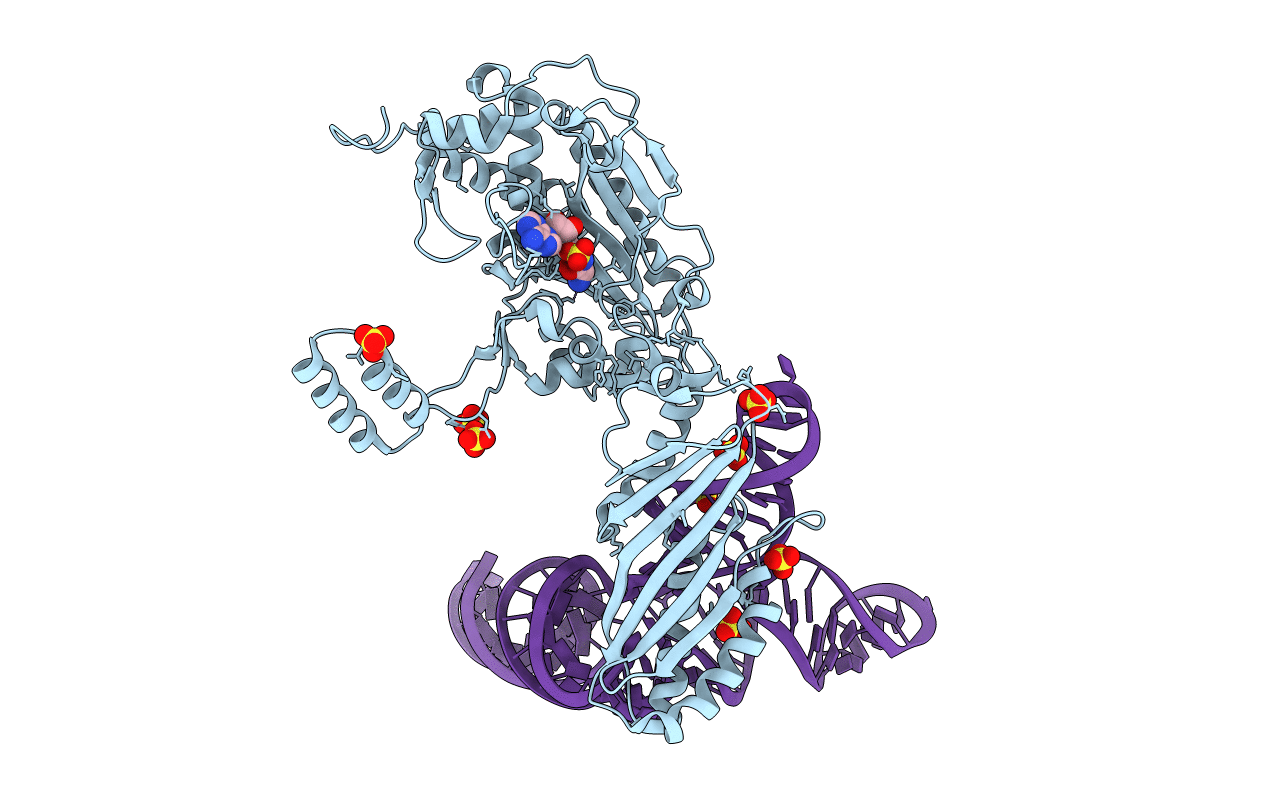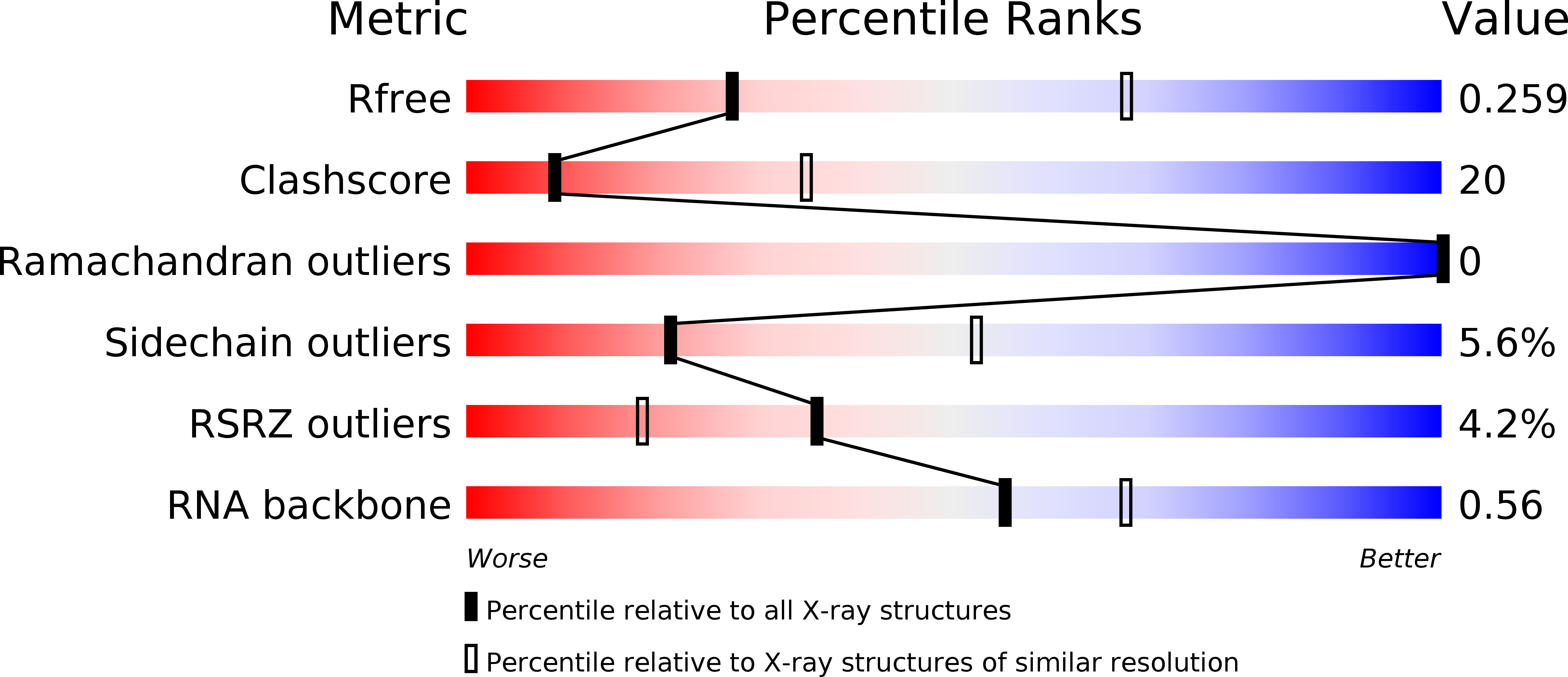
Deposition Date
2012-12-27
Release Date
2013-02-13
Last Version Date
2024-10-30
Entry Detail
PDB ID:
3W3S
Keywords:
Title:
Crystal structure of A. aeolicus tRNASec in complex with M. kandleri SerRS
Biological Source:
Source Organism:
Methanopyrus kandleri (Taxon ID: 190192)
Aquifex aeolicus VF5 (Taxon ID: 224324)
Aquifex aeolicus VF5 (Taxon ID: 224324)
Host Organism:
Method Details:
Experimental Method:
Resolution:
3.10 Å
R-Value Free:
0.26
R-Value Work:
0.20
R-Value Observed:
0.20
Space Group:
I 4 3 2


